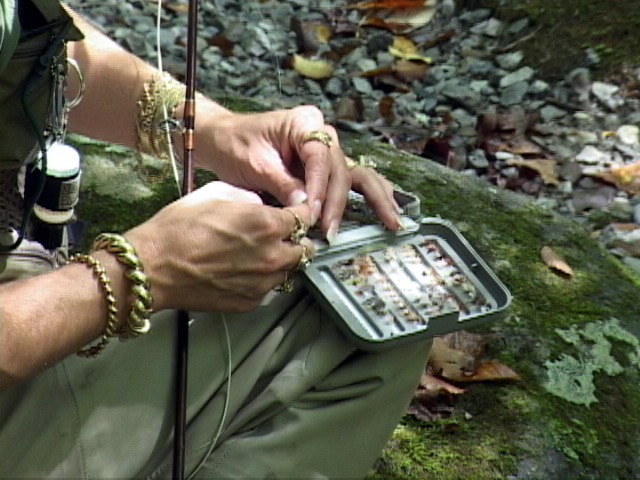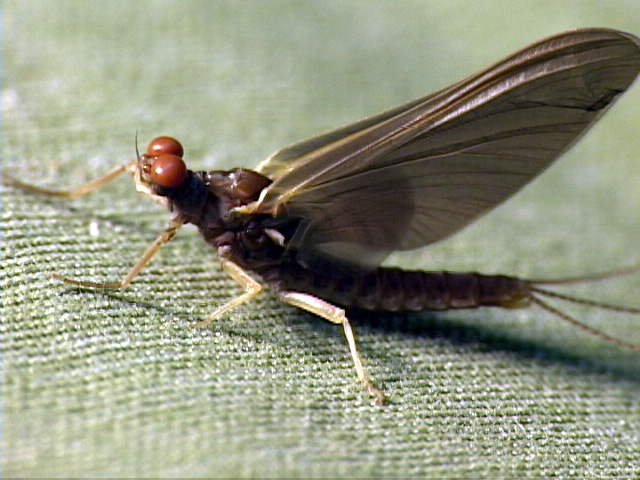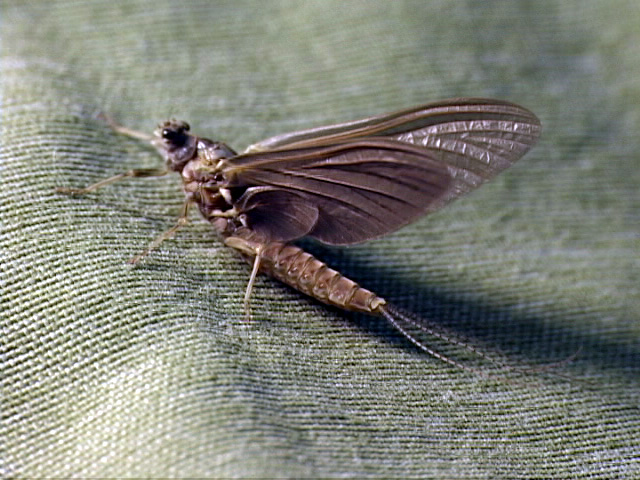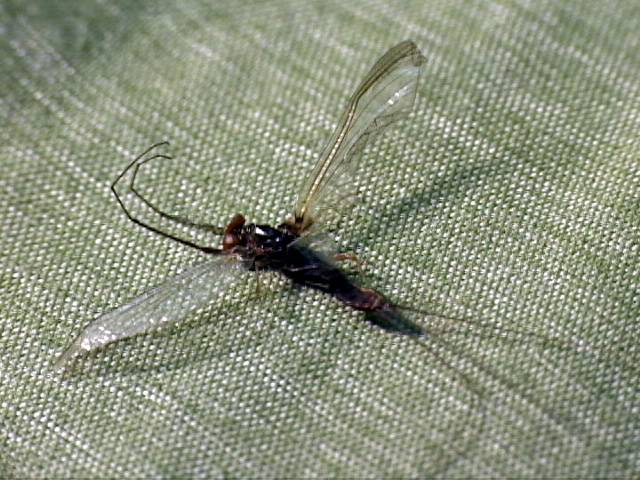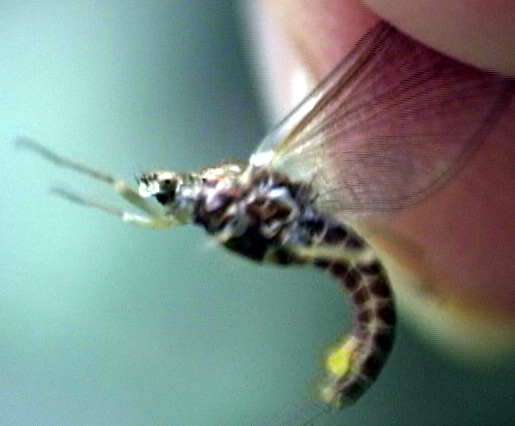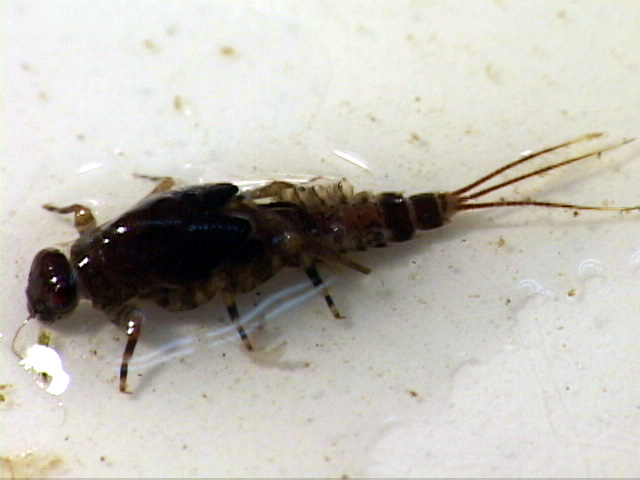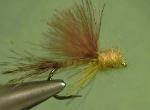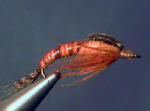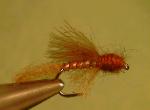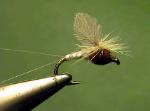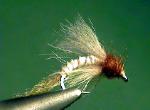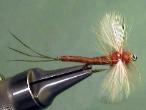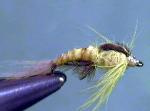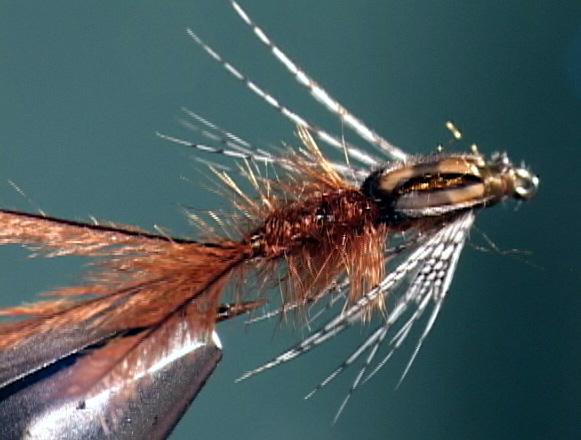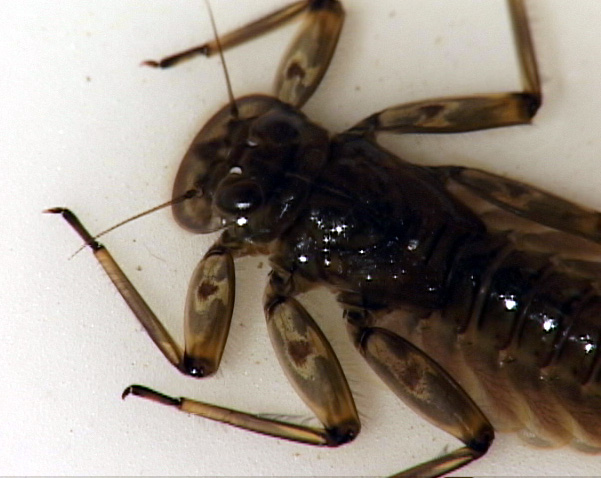
This is the clinger nymph of the Quill Gordon. Also, note just below that it only has two tails.
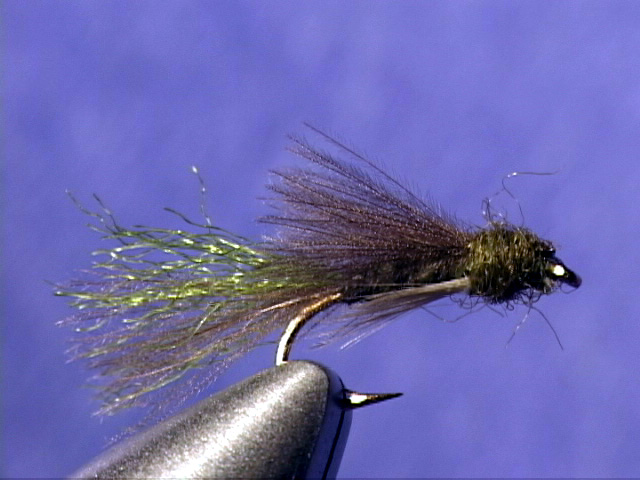
This is our “Perfect Fly” Blue-winged Olive Emerger.
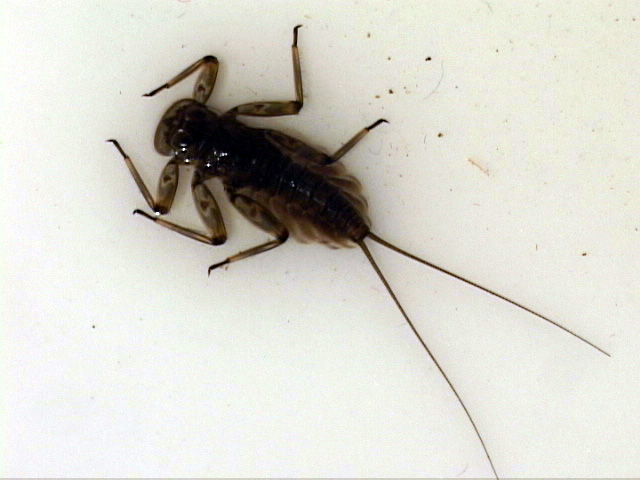
A Quill Gordon showing off its two tails.
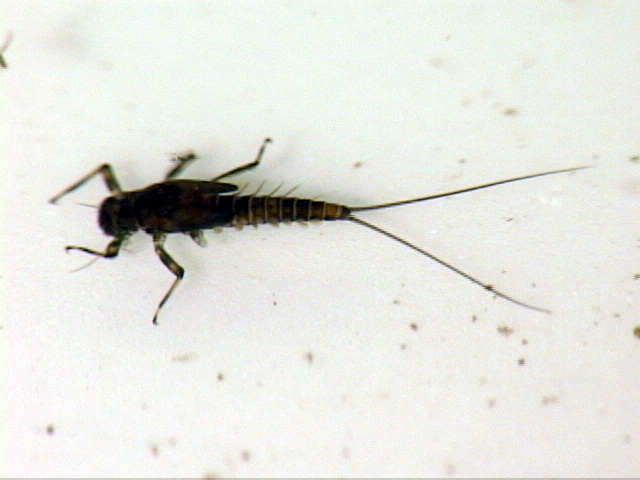
of Little Blue-winged olives.
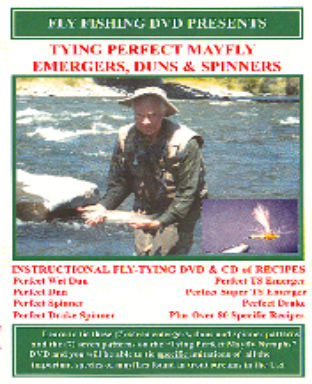
Click for More Information & Purchase
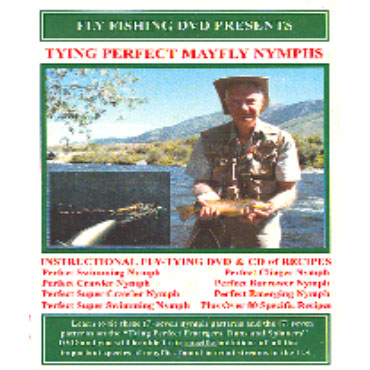
Click for More Information & Purchase
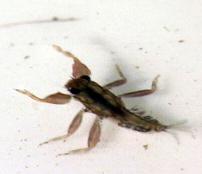
Three short tails and heavy front legs are a couple of things that help identify this mayfly nymph from this image taken at Little River.
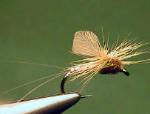
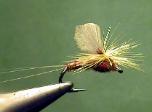
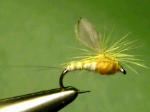
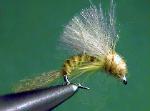
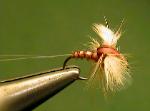
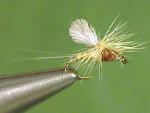
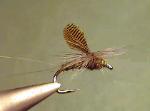
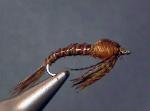
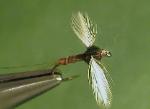
The following flies are what we recommend to imitate the various mayflies in the streams of the Great Smoky Mountains surface skim or emerging nymphs imitates those mayflies the surface skim just before it hatches. It should be fished near or in the surface skim. The emerging dun with a trailing shuck is part shuck and part dun. It imitates the hatching mayfly and should be fished in the surface skim. The dun is a dry fly that should be fished on the surface imitating the mayfly dun before it departs the water. The emerging adult is a wet fly designed to imitate those mayflies that hatch below the surface from the bottom to near the surface. The spinner is a spent dry fly that imitates the egg layers and dead or dying mayflies.
Blue Quill:
Paraleptophlebia adoptive
Abundant, common distribution
Nymphs:
Blue Quill Nymph: 18
Emerging Nymphs:
Blue Quill Emerger: 18
Emerging Dun with Trailing Shuck:
Blue Quill emerger with Trailing Shuck: 18
Duns:
Blue Quill: 18
Spinners:
Blue Quill Spinner: 18
Click here to see and purchase these flies
Quill Gordon:
Epeorus pleuralis
Abundant, scattered distribution
Nymphs:
Quill Gordon Nymph: 12, 14
Emerging Adults: (Wet Flies):
Quill Gordon Emerging Adult: 12, 14
Duns:
Quill Gordon Dun: 12, 14
Spinners:
Quill Gordon Spinner: 12, 14
Click here to see and purchase these flies
Eastern Blue-winged Olive:
Drunella species
Modest Abundance, scattered distribution
Nymph:
Blue-winged Olive Nymph: 14, 16
Emerging Nymph:
Blue-winged Olive Emerger: 14,16
Emerging Dun with Trailing Shuck:
Blue-winged Olive Emerger with T. S.: 14, 16
Dun:
Blue-winged Olive Dun: 14, 16
Spinners:
Blue-winged Olive Spinner: 14, 16
Click here to see and purchase these flies
Small Eastern Blue-winged Olive
slight abundance, isolated distribution
Attenella
Nymph:
Blue-winged Olive Nymph: 20
Emerger:
Blue-winged Olive Emerger: 20
Emerger with Trailing Shuck:
Blue-winged Olive Emerging Dun with Trailing Shuck::20
Dun:
Blue-winged Olive Dun: 20
Spinner:
Blue-winged Olive Spinner: 20
Click here to see and purchase these flies
Blue-winged Olive:
widespread abundance, modest distribution\
Baetis and Others
Nymphs:
Blue-winged Olive Nymph: 16, 18
Emerging Nymphs:
Blue-winged Olive Emerger: 16, 18
Emerging Dun with Trailing Shuck:
Blue-winged Olive Emerger TS: 16, 18
Duns:
Blue-winged Olive Dun: 16, 18
Spinners:
Blue-winged Olive Spinner: 16, 18
Click here to see and purchase these flies
Little Blue-winged Olive:
widespread abundance, modest distribution
Acentrella, Diphetor, Plauditus & Timpanoga sp
Nymph:
Blue=winged Olive Nymphs: 20
Emerger:
Blue-winged Olive Emerging Nymphs: 20
Emerging Dun with Trailing Shuck:
Blue-winged Olive Emerger with TS: 20
Duns:
Blue-winged Olive Dun: 20
Spinners:
Blue-winged Olive Spinner: 20
Click here to see and purchase these flies
Sulfur:
Isolated abundance, slight distribution
Ephemerella dorothea
Nymphs:
Sulfur Nymph: 16, 18
Emerging Nymphs:
Sulfur Emergers: 16, 18
Emerging Dun with Trailing Shuck:
Sulfur Emerger with TS: 16, 18
Duns:
Sulfur Dun: 16, 18
Spinners:
Sulfur Spinner: 16, 18
Click here to see and purchase these flies
Eastern Pale Evening Dun:
modest abundance, slight distribution
Ephemerella invaria
Nymphs:
Eastern Pale Evening Dun Nymph: 14
Emerging Nymphs:
Eastern Pale Evening Dun Emerger: 14
Emerging Dun with Trailing Shuck:
Eastern Pale Evening Dun Emerger with TS: 14
Dun:
Eastern Pale Evening Dun: 14
Spinners:
Eastern Pale Evening Dun Spinner: 14
Click here to see and purchase these flies
Hendricksons and Red Quill:
modest abundance, scattered distribution
Ephemerella subvaria
Nymphs:
Emerging Nymphs: Male: (Red Quill):
Hendrickson Emerger: 12, 14
Emerging Nymphs: Female:
Emerging Nymphs with Trailing Shuck: Male: Red Quill:
Hendrickson Emerger with TS – Male: 12, 14
Emerging Dun with Trailing shuck: Female:
Hendrickson Emerger with TS – Female: 12, 14
Duns – Male:
Hendrickson Dun – Male: 12/14
Duns: – Female:
Hendrickson Dun – Female: 12, 14
Spinners – Male:
Hendrickson Spinner – Male: 12, 14
Spinners – Female:
Hendrickson Spinner -Female: 12, 14
Click here to see and purchase these flies
Little Dark Hendricksons:
trickling abundance, Isolated distribution
Serratella sp
Nymphs:
Little Dark Hendrickson Nymph: 18
Emerging Nymphs:
Little Dark Hendrickson Emerger: 18
Emerging Dun with Trailing Shuck:
Little Dark Hendrickson Emerger with TS: 18
Duns:
Little Dark Hendrickson Dun: 18
Spinners:
Little Dark Hendrickson Spinner: 18
Click here to see and purchase these flies
Eastern Green Drake and Coffin Fly:
modest abundance, Isolated distribution (Abrams Creek)
Ephemera guttulata
Nymphs:
Eastern Green Drake Nymph: 6/8/10
Emerging Dun with Trailing Shuck::
Eastern Green Drake Emerger with TS: 6/8/10
Duns:
Eastern Green Drake Dun: 6/8/10
Spinners – Male:
Eastern Green Drake Spinner – Male: 6/8/10
Spinners – Female:
Eastern Green Drake Spinner – Female: 6/8/10
Click here to see and purchase these flies
Brown Drake:
trickling abundance, isolated distribution
Ephemera simulans
Nymphs:
Emerging Nymphs:
Emerging Dun with Trailing Shuck:
Duns:
Spinners: (Reddish Brown)
Click here to see and purchase these flies
Dark Red Quill:
trickling abundance, isolated distribution
Cinygmula subaequalis
Nymphs:
Dark Red Quill Nymph: 14
Emerging Nymphs:
Dark Red Quill Emerger: 14
Emerging Dun with Trailing Shuck:
Dark Red Quill Emerger with TS: 14
Duns:
Dark Red Quill Dun: 14
Spinners:
Dark Red Quill Spinner: 14
Click here to see and purchase these flies
Slate Drake:
very abundant, widespread distribution
Isonychia bicolor
Nymphs:
Slate Drake Nymph: 10, 12
Spinners:
Slate Drake Spinner: 10, 12
Click here to see and purchase these flies
American March Browns:
abundant, common distribution
Maccaffertium vicarium
Nymphs:
American March Brown Nymph: 10, 12
Emerging Nymphs:
American March Brown Emerger: 10, 12
Emerging Dun with Trailing Shuck:
American March Brown Emerger with TS: 10, 12
Duns:
American March Brown Dun: 10, 12
Spinners:
American March Brown Spinner: 10, 12
Click here to see and purchase these flies
Light Cahills:
abundant, common distribution
Stenacron interpunctatum
Nymphs:
Light Cahill Nymph: 14, 16
Emerging Nymphs:
Light Cahill Emerger: 14, 16
Emerging Dun with Trailing Shuck:
Light Cahill Emerger with TS: 14, 16
Duns:
Light Cahill Dun: 14, 16
Spinners:
Light Cahill Spinner: 14, 16
Click here to see and purchase these flies
Light Cahills:
Modest abundance, isolated distribution
Maccaffertium species
Nymphs:
Light Cahill Nymph: 14, 16
Emergng Nymphs:
Light Cahill Emerger: 14, 16
Emerging Dun with Trailing Shuck:
Light Cahill Emerger with TS: 14, 16
Duns:
Light Cahill Dun: 14, 16
Spinners:
Light Cahill Spinner: 14, 16
Click here to see and purchase these flies
Cream Cahills:
Modest abundance, common distribution
Maccaffertium sp
Nymphs:
Cream Cahill Nymph: 14, 16
Emerging Nymphs:
Cream Cahill Emerger: 14, 16
Emerging Dun with Trailing Shuck:
Cream Cahill Emerger with TS: 14, 16
Duns:
Cream Cahill Dun: 14, 16
Spinners:
Cream Cahill Spinner: 14, 16
Click here to see and purchase these flies
Little Yellow Quills:
abundant, common distribution
Heptagenia Group
Nymphs:
Little Yellow Quill Nymph: 16
Emerging Nymphs:
Little Yellow Quill Emerger: 16
Emerging Dun with Trailing Shuck:
Little Yellow Quill Emerger with TS: 16
Duns:
Little Yellow Quill Dun: 16
Spinners:
Little Yellow Quill Spinner: 16
Click here to see and purchase these flies
Note:
Where we note a trickling abundance of a mayfly, we recommend using imitations of them only when you detect a hatch or abundance of nymphs in the water of that particular mayfly. Otherwise, you would be better off using an imitation of a mayfly nymph that is more abundant for the particular area of the stream, or off course, if occurring, a dry fly dun or spinner for the hatch of a more abundant mayfly.
Copyright 2011 James Marsh

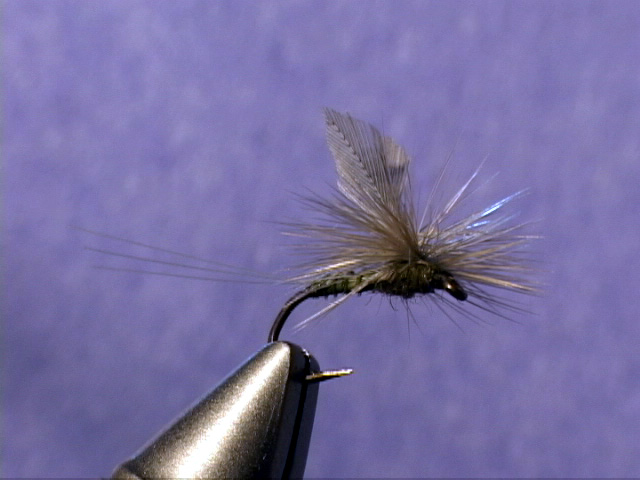
This is our “Perfect Fly” Blue-winged Olive Dun
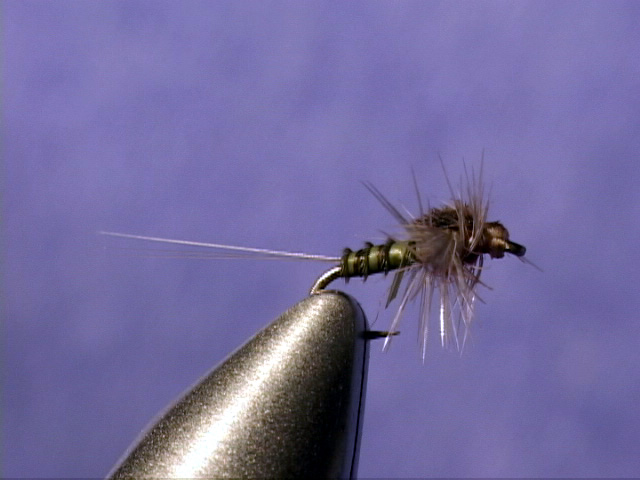
This is our “Perfect Fly” Blue-winged Olive Spinner
